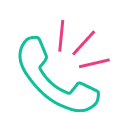Fear of Flying Treatment (Aerophobia)
Clinic Hours:
Sunday to Thursday, 8:00-16:00
Location:
The Rehabilitation Building, Virtual Reality, Floor -3
Who hasn’t experienced the disturbing thought of mechanical issues, emergency landings, and even crashes as soon as you get on the plane and take your seat before takeoff? Do you find yourself needing to have a few drinks or take a sedative to get through this? Perhaps, you’re even avoiding important trips altogether?
Indeed, it can be an overwhelming and at times paralyzing onslaught of stimuli - from entering the airport, walking through the terminal, waiting at the check-in gate, the sight of stationary planes, boarding the plane, hearing the plane's engines, the 'click' of the seat belt, and then take off. Suddenly you are soaring through the sky. So how come you don't feel like you’re on cloud nine? Many of us fail to truly experience that ethereal sensation. In fact, the thrilling feeling of going on vacation is replaced by paralyzing fear.
What is fear of flying?
Fear of flying or aerophobia in the medical lexicon, is a natural tendency. Who wouldn't feel a little uneasy about being suspended between heaven and earth, relying on an engine or two and a pair of wings? Around 30% of us experience at least some feeling of anxiety around a flight, accompanied by general discomfort and even physical symptoms such as palpitations, shortness of breath and dizziness.
For 3 out of every 100 people, this anxiety can lead to a complete avoidance of flying. Unfortunately, this can significantly impact their quality of life and potentially harm their career, especially for those whose work involves frequent travel abroad.
Different coping strategies
Solutions range from taking sedatives, varying levels of avoidance, accompanied flights, and a variety of treatments with limited effectiveness:
- Taking a sedative, for example, doesn't really solve the pre-flight anxiety that can start hours before the journey. It can also make you feel drowsy for hours, which can be challenging both during the flight and when leaving the plane, especially on short and medium-range flights.
- Partial avoidance such as reducing the number of flights or staying at home completely.
- Flying with an escort is an expensive and impractical solution.
Different psychological treatment approaches, however focused, can sometimes require a large number of meetings. One of their main drawbacks is the lack of a realistic simulation, which is crucial for success. This is mainly because they don't offer an experience of the "real thing".
Innovative simulation-based treatment
Studies show that one of the most effective approaches to address anxiety, including flight anxiety in particular, is through encountering the anxiety-inducing stimuli - the plane vibrations, engine noise, announcements over the PA system, warning sounds, and so on.
In therapeutic language, this encounter is referred to as "exposure." The scarier the stimulus the patient is exposed to and the more it tangibly simulates the flight experience for them, the more effective the treatment will be.
During exposure, with the guidance of a supportive psychologist, patients gain valuable tools for managing their anxiety. The underlying assumption is that practicing flight scenarios (takeoff, flying in different conditions, and landing) while acquiring skills to reduce anxiety, brings substantial relief in the vast majority of cases. In this way, virtual reality offers the most effective therapeutic approach.









